In the Medici's Echo: Bracciano Castle and the Renaissance Game of Thrones
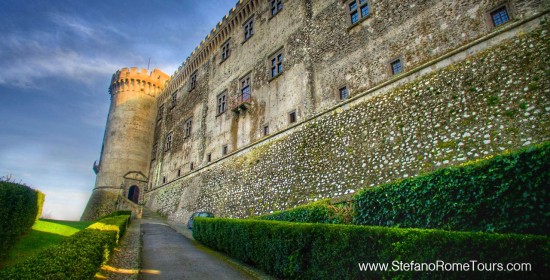
Buongiorno and welcome to Stefano Rome Tours, Rome’s premier tour company for Shore Excursions from Civitavecchia, Italy sightseeing tours from Rome, and long-distance transfers in Italy. Bracciano Castle (whose official name is Castello Orsini - Odescalchi) is considered one of the most beautiful and perfectly preserved castles in Italy and is featured in many of our popular Rome Countryside Tours from Rome and Shore Excursions from Civitavecchia.
Perched majestically on the shores of Lake Bracciano, the formidable castle stands as a silent sentinel, concealing tales of the Medici that transcend time. Just about 1 hour from Rome, Bracciano is one of the top destinations for day trips from Rome.
Join us on this journey through this historic bastion, we navigate the labyrinth of strategic marriages, alliances, love, betrayal, mysterious deaths, assassinations, and political machinations that echo through the walls, shaping the destinies of the illustrious Medici and Orsini families like a Renaissance Game of Thrones.
In the Medici's Echo: Bracciano Castle
and the Renaissance Game of Thrones
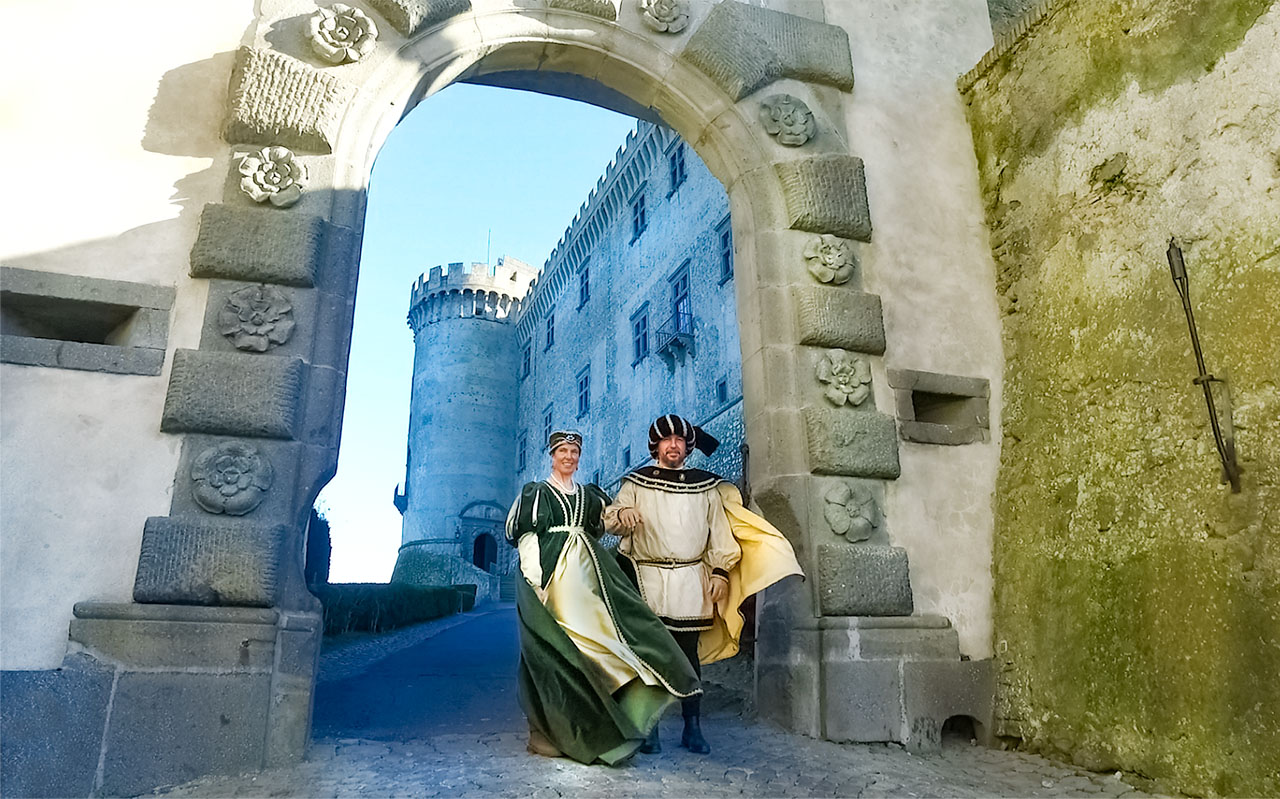
Bracciano Castle: from Medieval Fortress to Renaissance Castle
The grandeur of Bracciano Castle transcends its architectural magnificence; it embodies the legacies of the Orsini and Odescalchi families. Originating in the 12th century as a medieval fortress strategically perched to dominate the Bracciano region, the Orsini family transformed it in the 1470s into an impregnable Renaissance residential castle.
In 1558, Paolo Giordano Orsini, Duke of Bracciano, and Isabella de Medici wed following a certain period of arranged betrothal when they were 11 and 12 years old, creating a union between the Orsini and Medici families. The marriage between the couple when they came of age, took place amid the complex political landscape of the time, and the couple lived separately for much of their marriage, with Paolo residing in Bracciano and Isabella in Florence.
The governance of the Bracciano State necessitated Paolo’s residence in Bracciano. In contrast, Isabella resided in Florence as per her father's request. Fearing potential dangers from anti-Medici factions in Rome, Cosimo de Medici insisted that Isabella stay protected under the secure shelter of their home in Florence.
Isabella de' Medici: The Woman Behind the Legend
At the heart of Bracciano's saga lies the enigmatic figure of Isabella de' Medici. Born to Cosimo I, Grand Duke of Tuscany, Isabella has been portrayed through historical narratives as both beautiful and educated but with an inclination toward frivolity, surrounded by a circle of admirers and lovers, according to a longstanding historiographic tradition.
As we peel back the layers of intrigue, Isabella de' Medici reveals herself as a woman of substance through the extensive collection of letters written between her and her husband. Isabella's personal letters reveal a woman who was intellectual, caring, lovingly loyal to her husband, and plagued by persistent illness, dispelling the notion of a nefarious murder plot and illicit affairs of which she was later accused.
In an era where education for women was often limited, Isabella received a comprehensive and humanistic education. She demonstrated proficiency in multiple languages, including Italian, Latin, and Spanish, showcasing her linguistic versatility. Isabella's intellectual pursuits extended to the arts, literature, and sciences, contributing to the vibrant cultural atmosphere of the Renaissance. Contemporaries noted her sharp intellect and wit, and she engaged in correspondence with various scholars and intellectuals of her time.
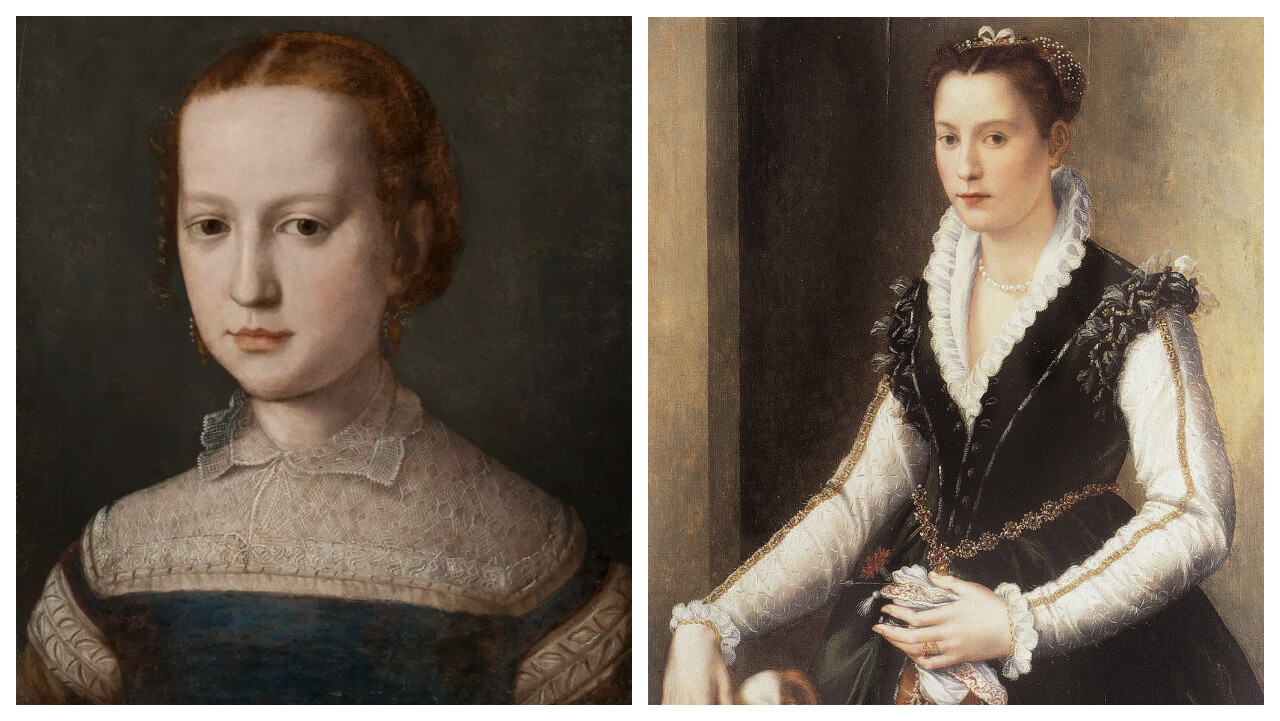
Legends, Scandals & Intrigue: Isabella de' Medici's Tragic Marriage
The Hall of the Orsini Frieze stands out as one of the castle's most exquisite noble rooms and was historically associated with Isabella de Medici. Adorned with original furnishings, the room’s coffered ceiling is a masterpiece featuring intricate roses and family monograms, while an ornate frieze showcases the heraldic coat of arms of the Orsini family from Bracciano along the perimeter.
Within the opulent room, we are transported into the heart of Isabella de' Medici's marriage to Paolo Giordano Orsini —a tale woven with threads of betrayal, scandal, and the echoes of centuries past.
Local tales from Bracciano told a scandalous tale of a cunning trapdoor near Isabella's chamber, a clandestine passage that some claim led to a well filled with blades and lime, a dark secret pit supposedly used to dispose of her alleged secret lovers.
The shadowy legends persisted for centuries, leading to Isabella's demise during a hunting expedition—a tragic casualty of a jealous crime of passion committed by her husband Paolo Giordano, supposedly unhinged by suspicions of her unfaithfulness. These haunting tales reverberate through the corridors of the castle, infusing Isabella's story with further complexity.

Was Isabella de Medici a Villain or Victim?
The age-old question lingers in the air: Was Isabella de' Medici a victim or a villain in this grand tale?
Isabella's story is not a simple one of victimhood or villainy. Recent discoveries have cast a radiant light on the shadows of Isabella's marriage. Over 500 letters exchanged between Isabella and Paolo Orsini have surfaced, revealing a relationship characterized by love, devotion, and companionship. These missives, carefully preserved through the ages, paint a vivid picture of a couple deeply connected, sharing their joys, fears, and the intricacies of daily life.
These letters also reveal a woman besieged by persistent illness, her health documented in letters to her husband. The alleged murder plot loses its clarity, and the trapdoor becomes a metaphor for the complexities of Isabella's life—filled with hidden passages and obscured truths.
In this intricate dance between fact and fiction, political motivations emerge as potential orchestrators of Isabella's complex legacy. The discontent of dissident Florentines, external forces seeking to undermine the Medici regime, and the rivalry between noble houses cloud the truth behind Isabella's tragic marriage. Could her tarnished image have been a pawn in a larger political game, a smear campaign fueled by rival powers' diplomatic intrigues?
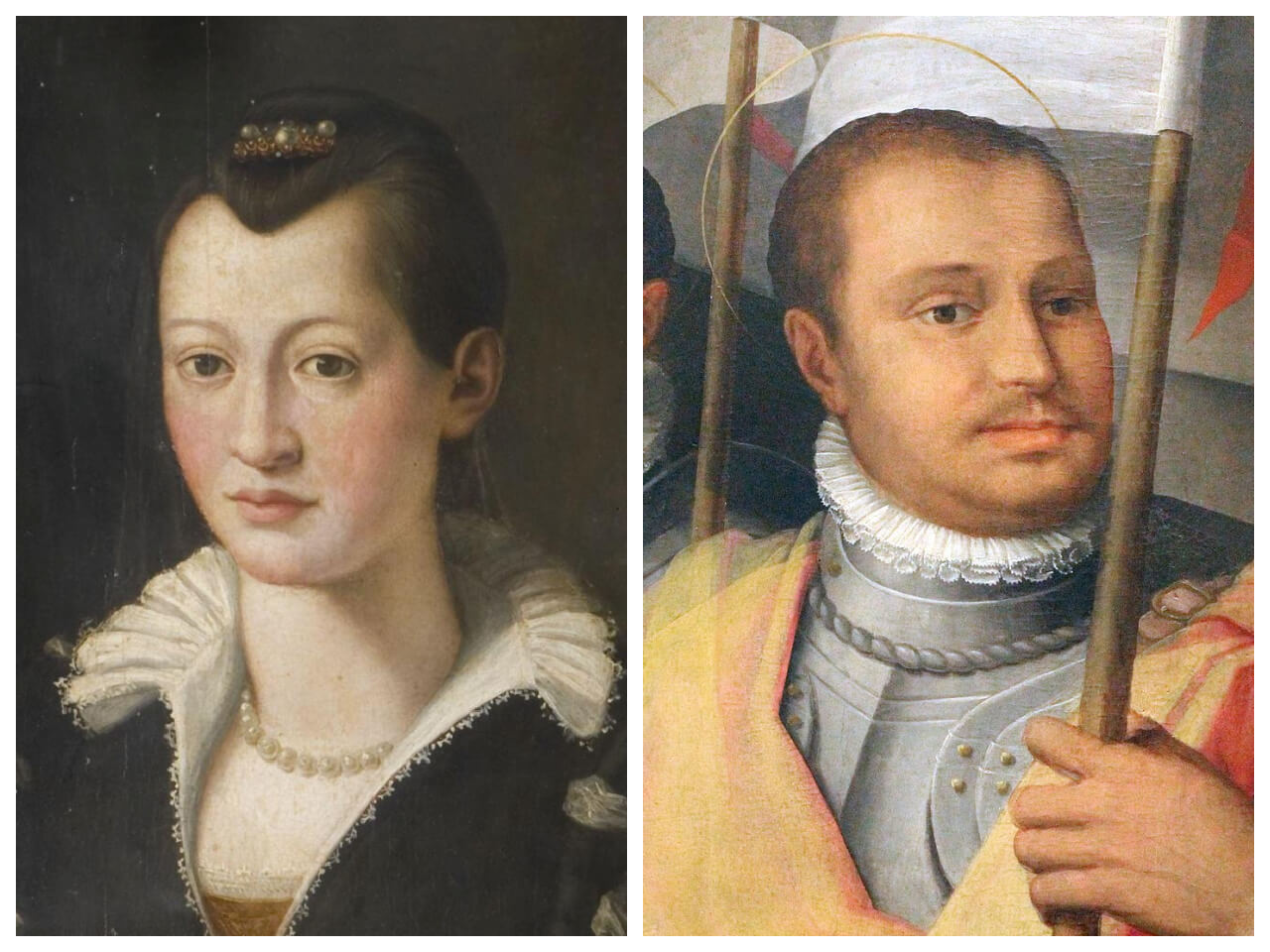
Love, Betrayal & Assassination: Paolo Giordano and Vittoria Accoramboni
Isabella's passing paved the way for a new chapter in Bracciano's saga beyond the Medici. Paolo Giordano's dangerous involvement with the married Vittoria Accoramboni unfolded amidst a backdrop of political intrigue, familial alliances, and the ever-present specter of power.
Their forbidden love took a sinister turn with the assassination of Vittoria Accoramboni’s husband Francesco Peretti, nephew to the future Pope Sixtus V. The assassination cast suspicion upon Paolo Giordano who faced accusations in connection to this murder.
Fleeing from the pursuit of Pope Sixtus V’s revenge, Paolo and Vittoria sought refuge in the northern region of Italy, sealing their union in matrimony in April 1585. However, tragedy struck once again when Paolo Giordano succumbed to death a mere few months later in Salò.
In a bone-chilling twist of fate, following Paolo's untimely death, Ludovico Orsini orchestrated the assassination of Vittoria Accoramboni herself over disputes concerning inheritance. The assets held by Vittoria, including family jewelry, were originally intended for Paolo's son from his marriage to Isabella de Medici, Virginio Orsini, the rightful heir to Paolo's legacy. After Vittoria's assassination, Ludovico Orsini was apprehended and executed shortly after.
Paolo Giordano’s marriage to Vittoria spawned a fresh set of myths alleging that he murdered his wife, Isabella, to wed his mistress, Vittoria. This dramatic narrative found expression in an early 1600 theatrical play titled "The White Devil" (further details below).
Medici's Enemies: Lies, Legends, and Political Warfare
Isabella de' Medici and Paolo Giordano Orsini's tale, marred by marital infidelities, murder, and intrigue, appear to be the roots of falsehoods that lead us into a world of political rivalries and calculated schemes. The origins of the rumors surrounding Isabella’s murder at the hands of Paolo Giordano Orsini find its roots in two pivotal factors.
Firstly, dissident Florentines, discontented with the ruling Medici family, adeptly wielded misinformation as a weapon in a politically charged atmosphere. Fabricated tales about Isabella's death served to undermine the existing power structure, creating a narrative of scandal and betrayal.
Secondly, external forces, exemplified by figures like Alfonso d'Este, sought to dismantle the Medici regime. Capitalizing on the prevalent discontent, they seized upon the false narrative of Isabella's murder, framing it as evidence of Francesco de' Medici's supposed unworthiness as the Grand Duke.
The rivalry between the Medici and Este families escalated, exacerbated by an anonymous letter sent to Alfonso d'Este's ambassador, Ercole Cortile. Despite initial dismissals by both Cortile and the Medici ambassador, the slanderous content persisted. The false news, fueled by hidden agendas, tainted the relationship between the noble houses.
Cortile's relentless efforts to spread slander included accusations of Paolo Giordano's infidelity and misconduct, instigating a discord that reached the Medici court. The Este diplomat aimed to exploit the fabricated account of Isabella's murder, either inciting a popular revolt against Francesco de' Medici or pressuring the removal of the imperial title.
Over the centuries, anonymous reports circulated, targeting the Medici family and the Church in Rome, represented by Paolo Giordano Orsini and his family. Isabella's murder rumor persisted as a political weapon, with detractors accusing her of adultery, further inflaming speculation about her guilt.
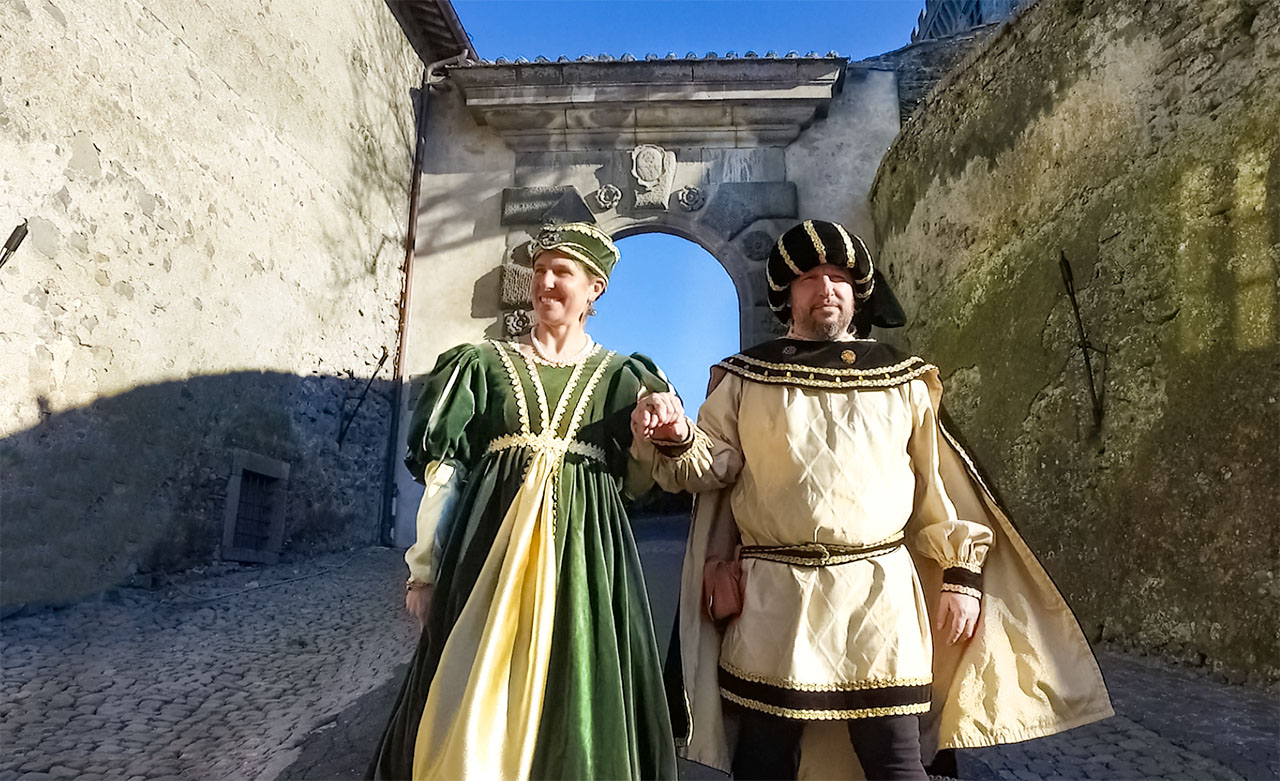
Dramatic Manipulations: “The White Devil”
In the intricate dance of Renaissance politics, where power, ambition, and rivalries collided, the stage became a potent arena for shaping public perception. The 1622 play "The White Devil", by John Webster, emerged as a theatrical weapon wielded in the arsenal of those who sought to tarnish the reputation of Isabella de' Medici and the ruling Medici family.
The plot suggests that Paolo orchestrates the murder of his wife, Isabella de' Medici, in a bid to marry Vittoria Accoramboni. This theatrical rendition mirrored the ongoing myths surrounding Isabella's death and Paolo's subsequent involvement with Vittoria. By intertwining historical events with dramatic license, the play became a vehicle for those who sought to cast shadows over Isabella's legacy. The stage, with its powerful ability to sway public opinion, became a battleground for the ideological struggle against the Medici regime.
In the 18th and 19th centuries, historians actively sought evidence of Isabella's infidelity, driven by positivism. Despite the lack of refutation at the time, the legend endured, becoming a cornerstone of national anecdotes. The Medici's legacy became a battleground of lies and political warfare, with Isabella's story serving as both victim and weapon in the complex game of Renaissance politics.

As we conclude our journey of Bracciano Castle and the intricate story of Isabella de' Medici's life, a poignant narrative unfolds—a saga of love, betrayal, and political machinations that transcends the boundaries of time. The grandeur of Bracciano Castle serves as the silent witness to the destinies entwined with the illustrious Medici and Orsini families.
As we step out of the shadows of Bracciano Castle, we carry with us a profound understanding of the complexities that shaped the Medici legacy—a legacy woven with threads of love, betrayal, and the enduring echoes of a bygone era.
How to visit Bracciano Castle from Rome or from Civitavecchia
You too may visit Bracciano Castle and explore its opulent interior on any of our Rome Countryside Tours starting from Rome or from Civitavecchia.
Our signature Castles and Lakes Tour takes you to Bracciano Castle for a morning visit, after which you will enjoy a leisurely lunch in the medieval hamlet of Ceri, followed by an adventurous exploration of the ancient Etruscan Tombs in the Banditaccia Necropolis in Cerveteri.
Our Rome City and Countryside Tour begins with a morning exploring Rome’s most famous squares, followed by a journey to the countryside for lunch in Ceri and a visit to Bracciano Castle.
Our Medieval Wonders Tour begins with a visit to the enchanting village of Tuscania, followed by lunch in Ceri and a visit to Bracciano Castle.

For cruisers staying in Rome pre-cruise, we offer a Countryside Pre Cruise Tour to Bracciano Castle and Ceri for lunch before you arrive at your ship in time for embarkation. Alternatively, we also offer the popular Charming Lakeside Villages Pre-Cruise Tour that takes you to Bracciano, Anguillara, and Trevignano - Lake Bracciano's most charming villages.
Cruisers going to Rome on their disembarkation day from Civitavecchia can enjoy our Post-Cruise Rome Town & Country Tour, Post Cruise Medieval Magic Tour from Civitavecchia, and Post-Cruise Castles and Lakes Tour.
For any questions or assistance in planning your Rome Countryside Tour from Rome or from Civitavecchia, contact us or browse through our website.
Thank you for reading our travel blog and for choosing Stefano Rome Tours for your private tours in Italy and shore excursions from Civitavecchia!
